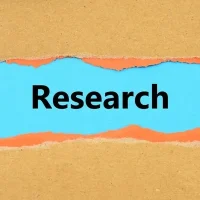The International Union for Conservation of Nature (IUCN) was established in 1948, making it one of the oldest and most influential environmental organizations in the world. Founded in Fontainebleau, France, the IUCN emerged from a growing recognition of the need to address environmental degradation and biodiversity loss on a global scale. Initially, the organization focused on the conservation of nature and the sustainable use of natural resources, bringing together governments, NGOs, scientists, and other stakeholders to collaborate on pressing environmental issues.
Over the decades, the IUCN has evolved into a global authority on the conservation of nature, with a mission that emphasizes the importance of biodiversity and sustainable development. The mission of the IUCN is to influence, encourage, and assist societies throughout the world to conserve the integrity and diversity of nature. This mission is underpinned by a commitment to ensuring that human development is sustainable and that natural resources are managed responsibly.
The IUCN operates through a unique membership structure that includes over 1,400 organizations, comprising both state and non-state actors. This diverse membership allows the IUCN to leverage a wide range of expertise and perspectives, making it a vital player in global environmental governance. The organization’s work is guided by its vision of a just world that values and conserves nature, recognizing that human well-being is intrinsically linked to the health of our planet.
The Role of the International Union for Conservation of Nature in Shaping Environmental Policy
The IUCN plays a pivotal role in shaping environmental policy at both national and international levels. By providing scientific research, policy analysis, and expert advice, the organization helps governments and other stakeholders make informed decisions regarding conservation and sustainable development. One of the key ways the IUCN influences policy is through its extensive network of experts who contribute to the development of guidelines, frameworks, and best practices for environmental management.
This expertise is particularly valuable in negotiations related to international treaties and agreements, such as the Convention on Biological Diversity (CBD) and the Paris Agreement on climate change. Moreover, the IUCN’s World Conservation Congress, held every four years, serves as a platform for dialogue among its members and stakeholders from various sectors. This event facilitates discussions on pressing environmental issues and allows for the formulation of resolutions that guide global conservation efforts.
The outcomes of these congresses often lead to significant policy shifts and commitments from governments and organizations worldwide. For instance, during the 2020 World Conservation Congress held in Marseille, France, members adopted a series of resolutions aimed at enhancing biodiversity protection and addressing climate change impacts. Such initiatives underscore the IUCN’s role as a catalyst for change in environmental policy.
Collaborating with Governments and NGOs: How the IUCN Influences Environmental Policy
Collaboration is at the heart of the IUCN’s approach to influencing environmental policy. The organization works closely with governments, NGOs, indigenous communities, and private sector actors to foster partnerships that enhance conservation efforts. By facilitating dialogue among diverse stakeholders, the IUCN helps build consensus on critical environmental issues and promotes integrated approaches to resource management.
For example, in regions facing deforestation challenges, the IUCN has partnered with local governments and NGOs to implement community-based forest management programs that empower local populations while conserving biodiversity. One notable example of successful collaboration is the IUCN’s work in the Amazon Basin. The organization has engaged with multiple stakeholders, including national governments and indigenous groups, to develop strategies for sustainable land use that balance economic development with environmental protection.
Through initiatives like the Amazon Cooperation Treaty Organization (ACTO), the IUCN has played a crucial role in promoting regional cooperation on conservation efforts. This collaborative model not only enhances policy effectiveness but also ensures that local knowledge and perspectives are integrated into decision-making processes.
The IUCN’s Impact on Biodiversity Conservation and Sustainable Development
The impact of the IUCN on biodiversity conservation is profound and far-reaching. Through its Red List of Threatened Species, the organization provides critical data on species status and trends, which informs conservation priorities globally. The Red List serves as an essential tool for policymakers, researchers, and conservationists alike, guiding efforts to protect endangered species and their habitats.
By raising awareness about biodiversity loss and its implications for ecosystems and human well-being, the IUCN has catalyzed action at various levels. In addition to species conservation, the IUCN promotes sustainable development practices that recognize the interdependence between human societies and natural ecosystems. The organization advocates for nature-based solutions that harness ecosystem services to address societal challenges such as food security, water scarcity, and climate resilience.
For instance, in its work on marine protected areas (MPAs), the IUCN emphasizes the importance of conserving marine biodiversity while supporting sustainable fisheries and tourism industries. By demonstrating how conservation can contribute to economic growth and community well-being, the IUCN effectively bridges the gap between environmental protection and development goals.
Challenges and Opportunities for the IUCN in Environmental Policy Advocacy
Despite its successes, the IUCN faces several challenges in its advocacy for environmental policy. One significant hurdle is the increasing pressure from economic development activities that often prioritize short-term gains over long-term sustainability. As countries strive for economic growth, natural resources are frequently exploited without adequate consideration for their ecological value.
This trend poses a threat to biodiversity and undermines conservation efforts. The IUCN must navigate these complex dynamics while advocating for policies that promote sustainable practices. However, challenges also present opportunities for innovation and collaboration.
The growing recognition of climate change as a critical global issue has opened new avenues for the IUCN to engage with diverse stakeholders on environmental policy. As nations commit to reducing greenhouse gas emissions and enhancing climate resilience, there is an opportunity for the IUCN to position itself as a leader in integrating biodiversity considerations into climate action plans. By promoting nature-based solutions that address both climate change and biodiversity loss, the organization can help shape policies that benefit both people and ecosystems.
The Future of the IUCN’s Role in Environmental Policy and Conservation
Driving Innovation through Partnerships and Technology
By continuing to engage with governments, NGOs, and local communities, the IUCN can foster innovative partnerships that drive meaningful change. Moreover, as technology advances, there are new opportunities for the IUCN to utilize data-driven approaches in its conservation efforts. The integration of remote sensing technologies, big data analytics, and citizen science can enhance monitoring capabilities and inform evidence-based decision-making.
Adapting to Evolving Challenges
By embracing these technological advancements while remaining committed to its core mission of conserving nature, the IUCN can adapt to evolving challenges in environmental policy advocacy. The organization’s ability to leverage its expertise and collaborative approach will be crucial in guiding societies toward a more sustainable relationship with nature.
A Crucial Role in Shaping the Future
In conclusion, the IUCN has played a vital role in shaping environmental policy since its inception in 1948. Through collaboration with diverse stakeholders and a commitment to scientific research, the organization has made significant strides in biodiversity conservation and sustainable development. While challenges remain, opportunities abound for the IUCN to continue influencing policy at local, national, and global levels.








































